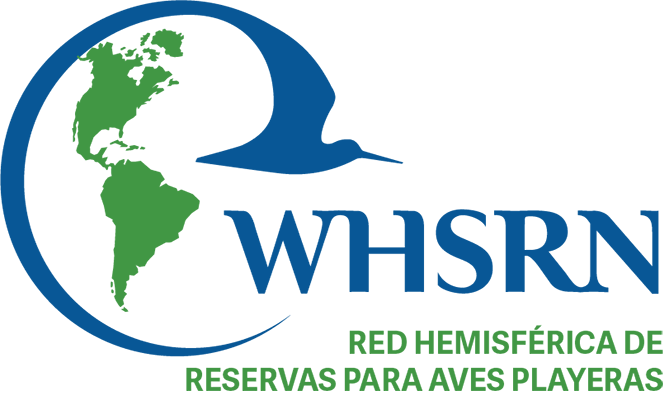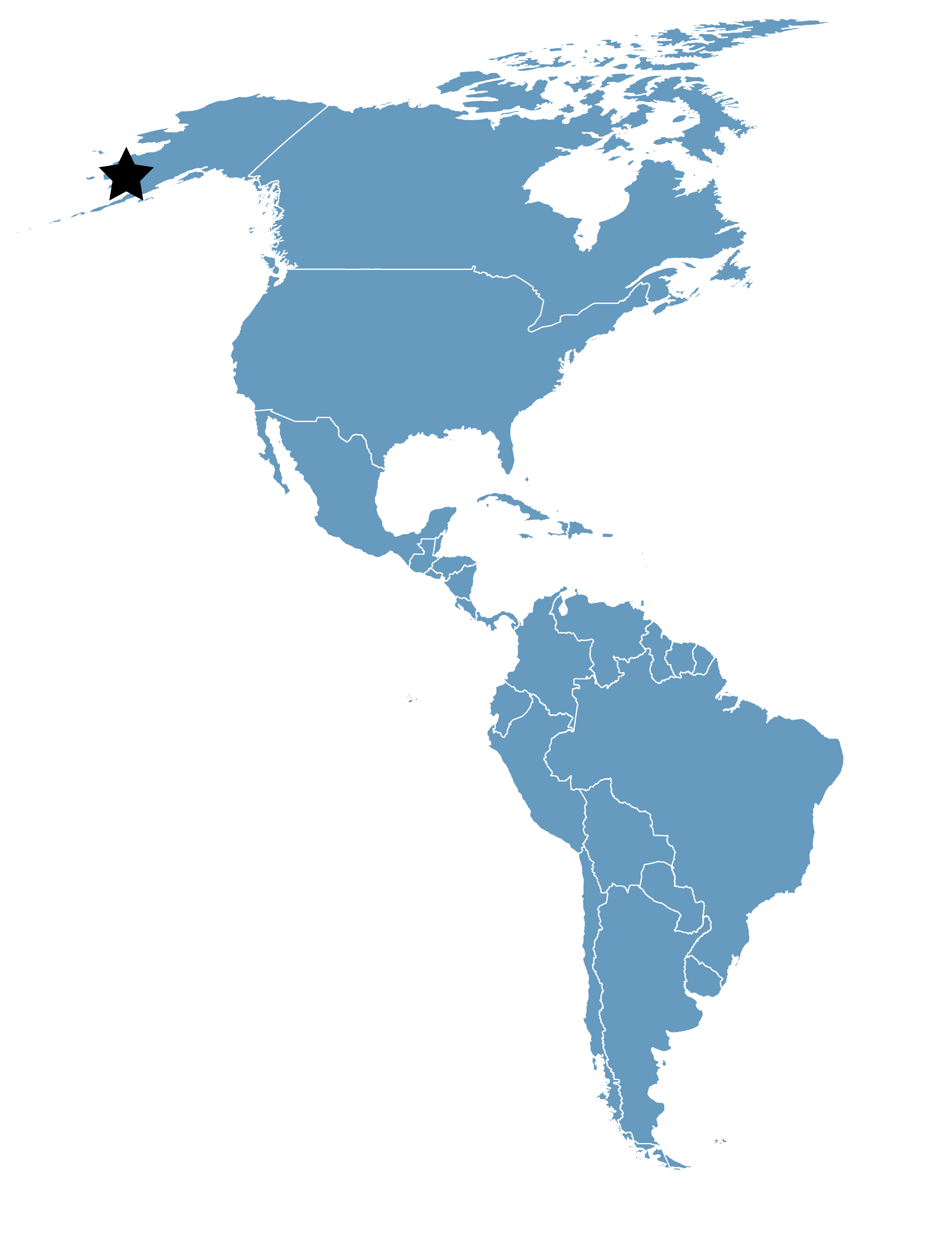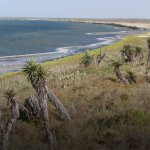Yukon Delta NWR
Location
Alaska, United States
Category
Hemispheric
Basis for Designation
More than 500,000 shorebirds annually. More than 30% of the global population of Bar-tailed Godwit and Bristle-thighed Curlew.
Size
2,300,000 hectares (5,683,415 acres)
Date Designated
2000
Site Owner
U.S. Fish and Wildlife Service
Overview
The Yukon Delta National Wildlife Refuge supports one of the largest and most diverse populations of breeding shorebirds in the Western Hemisphere. More than 500,000 shorebirds use the refuge annually, including more than 30% of the global population of Bar-tailed Godwit and Bristle-thighed Curlew.
The delta was created by the Yukon and Kuskokwim rivers and their tributaries. The immense wilderness includes 8 million hectares of low tundra communities, 310,000 hectares of unvegetated intertidal mud and sand flats, and 4,100 km of shoreline broken by 22 large river mouths and 13 bays. The extensive intertidal flats are adjacent to about 920,000 hectares of wet, sedge-grass meadows that lie between the average high-tide line and the storm-tide line. Coastal meadows and heath tundra are dotted with numerous lakes and ponds. Some 70% of the refuge is less than 100 feet in elevation.
The Andreafsky Wilderness is a region of rolling hills, most of which are covered by moist tundra. Ridge tops and sleeper slopes support xeric alpine tundra. Spruce forest/muskeg is widespread in the two major river valleys of the Andreafsky River. Oxbow lakes, beaver ponds, and gravel bars provide additional shorebird habitat along the rivers.
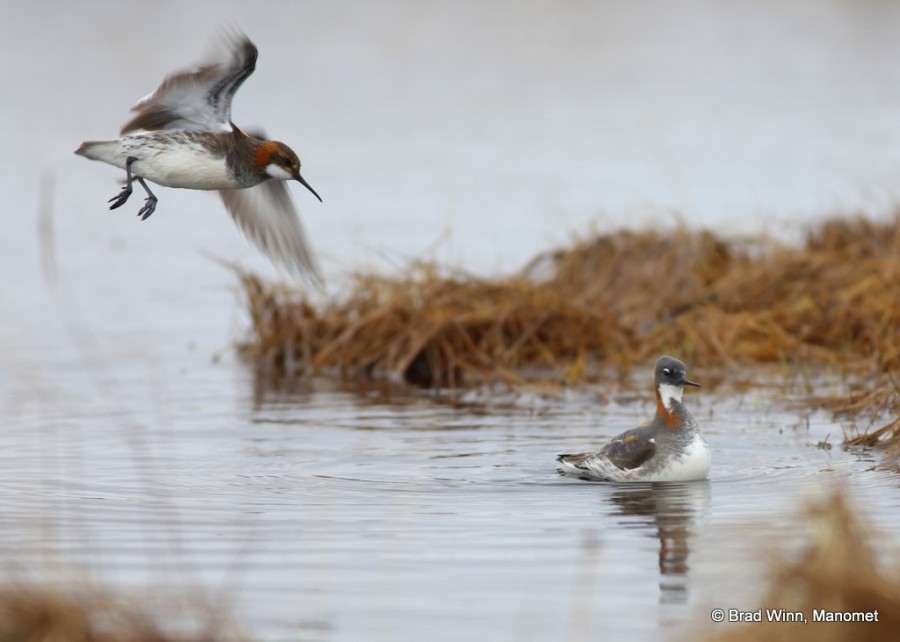
Red-necked Phalarope in the Yukon Delta. These diminutive shorebirds spend the majority of the year out in the Pacific Ocean, floating on the high seas eating tiny marine life brought to the surface in upwelling currents. Photo: Brad Winn.
Ecology & Conservation
All lands within this site are part of the Yukon Delta National Wildlife Refuge, which is managed for the benefit of fish and wildlife resources and other compatible uses in accordance with the National Refuge Administration Act (1966), the Alaska National Interest Lands Conservation Act (1980), and the National Wildlife Refuge System Improvement Act (1997).
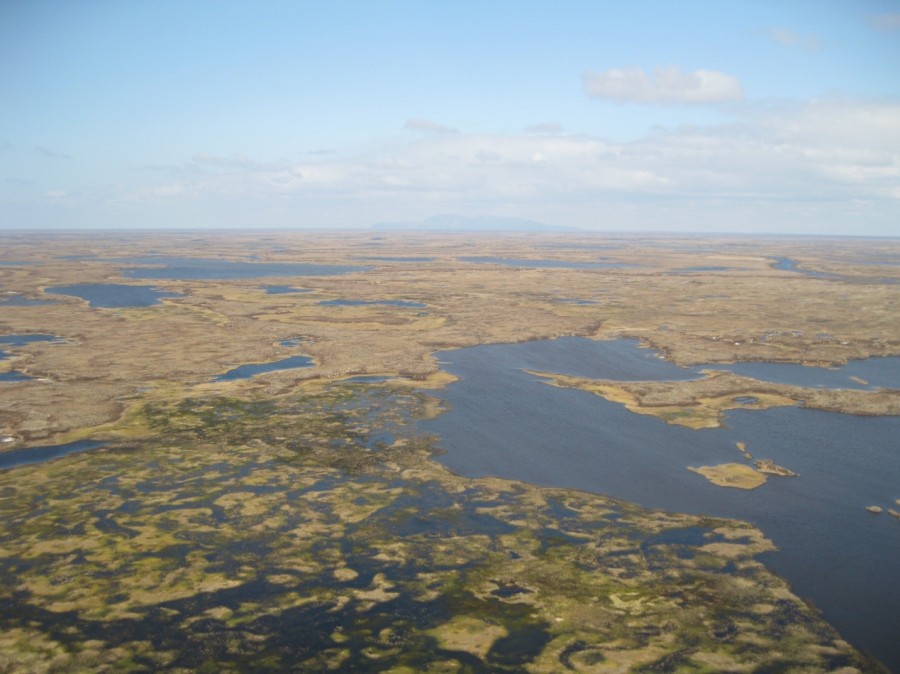
An aerial view of the vast wetlands on the Yukon Delta, where shorebirds nest in high densities. Photo: Stephen Brown.
Subsistence harvest of large shorebirds has increased dramatically along at the central YKD coastline over the last several years. The reasons for and scope of the increase are unknown.
Although human induced threats are minimal, possible increase in the number of Common Ravens, due to the presence of open dumps in neighboring villages, could increase predation on shorebird nests to a point that exceeds historical levels.
Shorebird Species Present
- Black-bellied Plover
- American Golden-Plover
- Pacific Golden-Plover
- Greater Yellowlegs
- Wandering Tattler
- Whimbrel
- Bar-tailed Godwit
- Ruddy Turnstone
- Black Turnstone
- Red Knot
- Sanderling
- Semipalmated Sandpiper
- Western Sandpiper
- Pectoral Sandpiper
- Sharp-tailed Sandpiper
- Rock Sandpiper
- Dunlin
- Long-billed Dowitcher
- Hudsonian Godwit
- Surfbird
- Least Sandpiper
- Baird’s Sandpiper
- Common Snipe
- Red-necked Phalarope
- Red Phalarope
- Solitary Sandpiper
- Bristle-thighed Curlew


